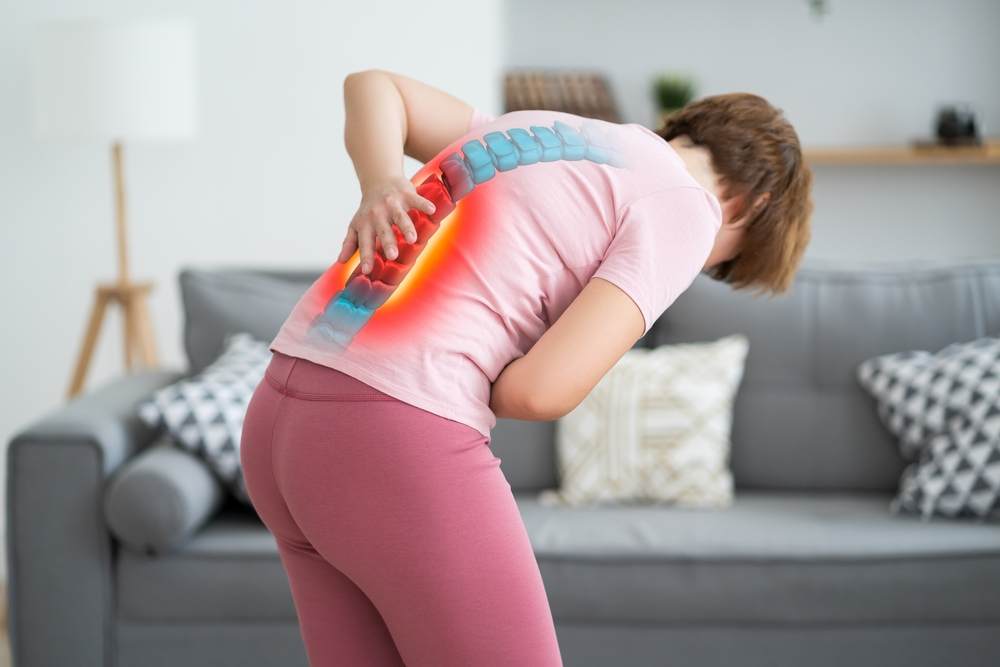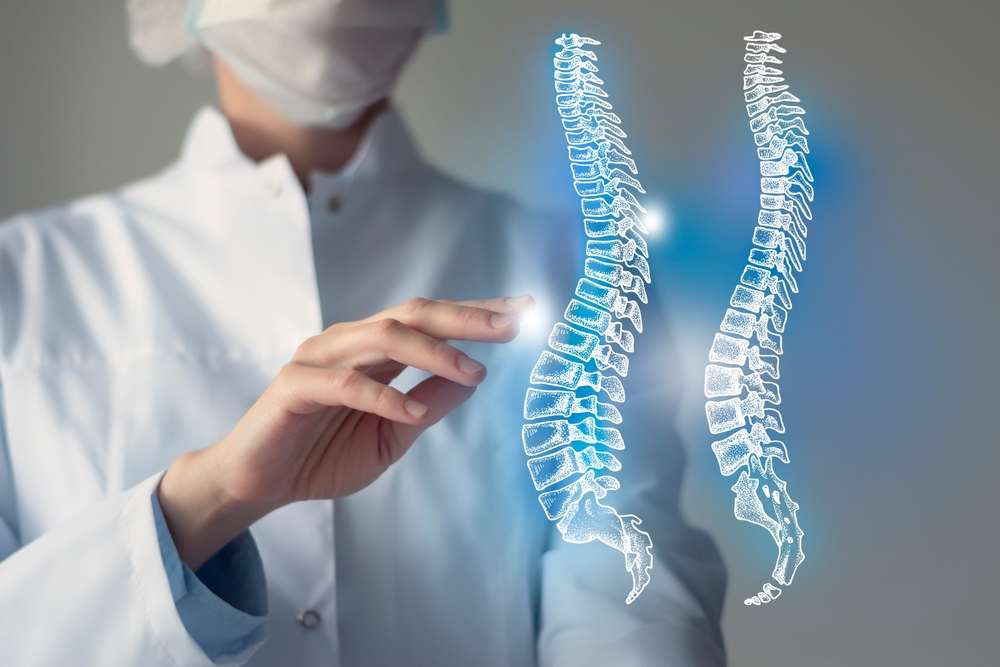 Degenerative disc disease is a common spinal condition characterized by the gradual deterioration of the spinal discs that separate vertebrae. These discs act as shock absorbers between the vertebrae, providing flexibility and support to the spine. However, whether due to age or injury, these discs can lose their elasticity, leading to pain, stiffness, and reduced mobility. Degenerative disc disease can occur in different parts of the spine, and there are quite a few dos and don’ts to consider when dealing with this condition, including a few things to avoid with degenerative disc disease.
Degenerative disc disease is a common spinal condition characterized by the gradual deterioration of the spinal discs that separate vertebrae. These discs act as shock absorbers between the vertebrae, providing flexibility and support to the spine. However, whether due to age or injury, these discs can lose their elasticity, leading to pain, stiffness, and reduced mobility. Degenerative disc disease can occur in different parts of the spine, and there are quite a few dos and don’ts to consider when dealing with this condition, including a few things to avoid with degenerative disc disease.
How Degenerative Disc Disease Affects Different Parts of the Spine
Degenerative disc disease can affect different regions of the spine, including the cervical, thoracic, and lumbar spine. Here’s what to know about each of these areas:
Cervical Spine
The cervical spine consists of seven vertebrae (C1-C7) located in the neck region. This part of the spine supports the weight of the head and allows for a wide range of motion, including bending, twisting, and tilting. The cervical spine also houses and protects the spinal cord, along with nerves that branch out to the shoulders, arms, and hands. Degenerative disc disease in the cervical spine can cause neck pain, stiffness, and discomfort that may radiate into the shoulders and arms. In severe cases, it can lead to numbness, weakness, and impaired coordination in these areas as well.
Thoracic Spine
The thoracic spine is made up of twelve vertebrae (T1-T12) in the mid-back area that connects to the rib cage. This part of the spine provides structural support and stability to the upper body. Unlike the cervical spine, the thoracic spine has limited mobility due to its connection to the ribs, though it does allow for rotation and some degree of flexion and extension. While less common, degenerative disc disease in the thoracic spine can cause mid-back pain, stiffness, and limited mobility.
Lumbar Spine
The lumbar spine consists of five vertebrae (L1-L5) located in the lower back area. This part of the spine bears most of the body’s weight and is responsible for supporting movements like bending, lifting, and twisting. The lumbar spine is more prone to disc degeneration and injury due to the significant stresses on the area during daily activities. Degenerative disc disease in the lumbar spine often leads to lower back pain, reduced flexibility, and sciatica, which is a type of pain that radiates down the leg. Severe cases may result in lumbar spinal stenosis, nerve compression, and symptoms such as leg weakness or bowel and bladder dysfunction.
Sacral Spine & Coccygeal Spine
The sacral spine comprises five fused vertebrae (S1-S5) situated below the lumbar spine, forming the triangular-shaped sacrum. This area connects the spine to the pelvis and serves as a strong foundation for many weight-bearing activities. The sacral spine also houses the sacral nerves, which play a key role in bowel, bladder, and sexual function. The coccygeal spine, commonly referred to as the tailbone, consists of fused vertebrae located at the base of the spine.
What to Avoid Doing with Degenerative Disc Disease
 Following your treatment plan and working alongside your Conyers spine specialist is just as important as recognizing certain activities that may actually make your degenerative disc disease symptoms worse. Here are some 7 things to avoid with degenerative disc disease, including a few that might surprise you!
Following your treatment plan and working alongside your Conyers spine specialist is just as important as recognizing certain activities that may actually make your degenerative disc disease symptoms worse. Here are some 7 things to avoid with degenerative disc disease, including a few that might surprise you!
High-Impact Activities
Avoid activities that place too much stress and strain on the spine, including high-impact sports like running, jumping, or contact sports. These activities can accelerate the degeneration of the spinal discs and exacerbate your symptoms, so they are definitely atop the list of things to avoid with degenerative disc disease. Instead, opt for low-impact exercises like swimming, walking, or cycling, which are gentler on the spine while still promoting heart health and overall fitness.
Prolonged Sitting or Standing
Avoid prolonged periods of sitting or standing in one position because this can increase pressure on the spinal discs and aggravate symptoms. If you have a desk job or lead a sedentary lifestyle, make sure to take regular breaks to stretch, change positions, and engage in gentle movements to relieve pressure on the spine.
Poor Posture
Avoid slouching or other poor posture habits that can contribute to spinal misalignment and make your symptoms worse. Practice good posture by sitting up straight, keeping your shoulders back, and aligning your ears, shoulders, and hips in a straight line. Use lumbar support cushions or pillows to maintain the natural curve of your lower back when sitting or lying down.
Heavy Lifting
Avoid lifting heavy objects or engaging in activities that require repetitive bending or twisting of the spine, as this can increase the risk of worse symptoms and other spinal disc issues like disc herniation. When lifting objects, use proper lifting techniques by bending at the knees, keeping your back straight, and using your leg muscles to lift the load. If possible, enlist the help of others or consider assistive devices to reduce the strain on your spine.
Excessive Smartphone Use
Spending excessive time hunched over your smartphone or other handheld devices can put additional strain on the neck and contribute to poor posture, which can exacerbate symptoms in the cervical spine. This position, often referred to as “tech neck,” is definitely one of the top things to avoid with degenerative disc disease in the neck. Instead, practice good ergonomics by holding your device at eye level and taking frequent breaks to stretch and realign your spine.
Wearing High Heels
While high heels may be fashionable, they can negatively impact spinal alignment and even increase the risk of developing or exacerbating degenerative disc disease in the lumbar spine. Wearing high heels shifts the body’s center of gravity forward and increased pressure on the spinal discs. Instead, consider supportive footwear with lower heels or flat shoes to help maintain proper spinal alignment and reduce strain on your lower back.
Carrying Heavy Bags on One Shoulder
Carrying heavy bags or backpacks on one shoulder can lead to uneven distribution of weight and strain on the spine, particularly in the neck and lower back areas. This asymmetrical load can cause muscle imbalances, aggravate posture, and increased pressure on the spinal discs.
How a Chiropractor Can Help
At AICA Orthopedics in Conyers, our team of spine specialists includes orthopedic doctors, neurologists, chiropractors, and physical therapists. We work with people suffering from degenerative disc disease to offer pain relief, improve functionality, and provide guidance for preventative care. Degenerative disc disease can significantly impact a person’s quality of life, but with proper management and care, it’s possible to reduce symptoms and maintain spinal health. Visit AICA Orthopedics for a Conyers chiropractor near you and get started on a personalized treatment plan today.
